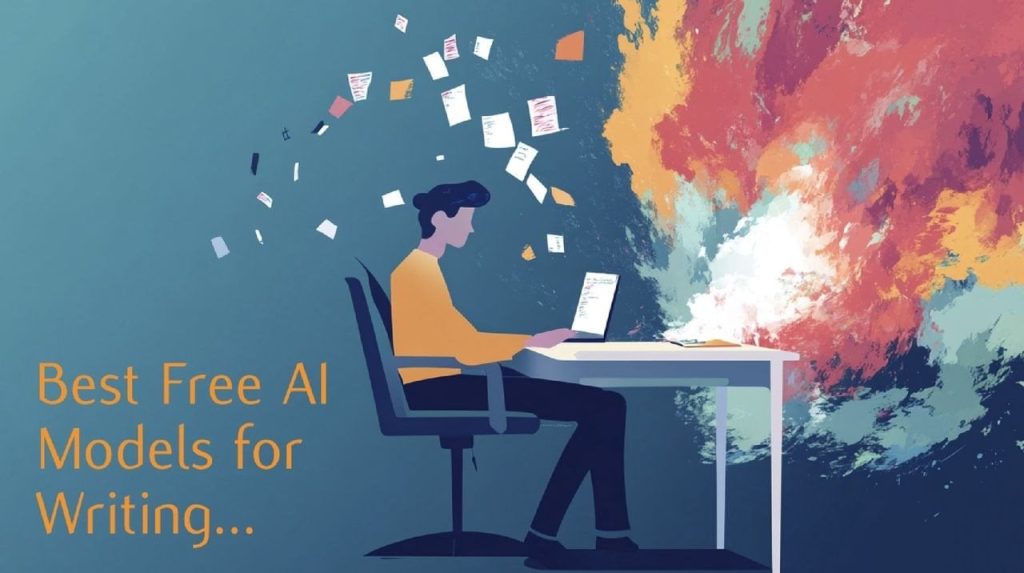
What if you could unlock the power of innovative AI writing tools without spending a dime? In a world where premium subscriptions dominate the tech landscape, it’s easy to assume that the best tools are locked behind a paywall. But here’s the twist: some of the most innovative and effective AI models for writing are completely free. These tools are reshaping how we approach storytelling, blogging, and even technical writing, offering capabilities that rival their paid counterparts. Whether you’re crafting a vivid short story or drafting a compelling essay, the rise of free large language models (LLMs) is proof that high-quality writing assistance doesn’t have to come at a high cost.
In this overview, the Nerdy Novelist explores the most impressive free AI models available today, diving into their strengths, limitations, and unique features. From platforms like Open Router that simplify access to diverse models, to local hosting tools that prioritize privacy, you’ll discover a range of options tailored to your creative needs. But it’s not all smooth sailing, some models excel in crafting imaginative narratives, while others falter when tasked with more complex writing. As you read on, you’ll uncover the trade-offs, surprising capabilities, and future potential of these tools. The question isn’t whether free AI models can transform your writing, it’s how far they can take you.
Free AI Writing Tools Overview
TL;DR Key Takeaways :
Free large language models (LLMs) are transforming creative writing by offering powerful tools at no cost, narrowing the gap between free and premium AI solutions.
Accessing free AI models is easier through centralized platforms like Open Router or local hosting tools like LM Studio and Olama, which provide greater privacy but require robust hardware.
Performance varies among free AI models, with standout options like Quen 3 and DeepSeek R1 excelling in creative tasks, while others like GLM 4.5 Air and Kimmy K2 have notable limitations.
Privacy concerns are significant, as many platforms use user inputs for training; locally hosted models offer a secure alternative but demand technical expertise and resources.
The future of free AI models is promising, with advancements in open source initiatives making them increasingly versatile and competitive with premium options for creative and technical writing tasks.
How to Access Free AI Models
Accessing free AI models has become more straightforward with the rise of centralized platforms and local hosting tools. Platforms like Open Router serve as hubs where you can explore a variety of LLMs. These platforms allow you to filter models by pricing to find free options and use sorting features such as “top weekly” or “newest” to discover popular or recently added tools. This functionality makes it easier to locate models tailored to your specific writing needs.
For those seeking greater control and privacy, local hosting tools like LM Studio and Olama enable you to download and run models directly on your hardware. This approach ensures that your data remains secure and eliminates reliance on external platforms. However, hosting models locally requires a robust computing setup, including high-performance GPUs, to handle the computational demands of advanced AI models.
Performance of Free AI Models
The performance of free AI models varies widely, with some excelling in creative writing tasks while others fall short. Below are examples of models that stand out for their capabilities:
Quen 3: Renowned for generating detailed and descriptive narratives, making it an excellent choice for storytelling and fiction writing.
DeepSeek R1: Excels at crafting coherent and imaginative content, making it suitable for essays, blog posts, and other creative projects.
However, not all free models perform at the same level. Some have notable limitations:
GLM 4.5 Air: Produces shorter and less descriptive outputs, which can limit its effectiveness for complex writing tasks.
Kimmy K2: Struggles with depth and nuance, making it less suitable for advanced creative writing or intricate storytelling.
Additionally, models like OpenAI’s GPD OSS 20B and certain uncensored versions have shown mixed results. While they handle basic tasks adequately, their outputs often lack the sophistication and depth required for more demanding projects.
Free AI Tools for Storytelling, Blogging and Essays
Enhance your knowledge on AI writing by exploring a selection of articles and guides on the subject.
Privacy Considerations and Trade-offs
Privacy is a critical factor when using free AI models. Many platforms require users to consent to their inputs being used for training purposes. While this practice helps improve the models, it may not be ideal if you are working with sensitive or confidential material.
For those prioritizing privacy, hosting models locally is a viable alternative. Tools such as LM Studio and Olama allow you to download models directly to your device, making sure that your data remains secure. However, this approach comes with its own set of trade-offs, including the need for significant hardware resources and technical expertise to set up and maintain the models.
Trends and Future Potential of Free AI Models
The landscape of free AI models is evolving rapidly, driven by advancements in open source initiatives. These efforts are closing the gap between free and proprietary models, with free options increasingly rivaling their premium counterparts in quality and versatility. Many companies release free versions of their models to gather training data and refine their performance, contributing to the overall improvement of these tools.
Free AI models are also becoming more versatile, capable of handling a broader range of applications. They are now used for drafting short stories, essays, poetry, and even technical content. This growing versatility highlights the expanding usability of free models across various creative domains.
Looking ahead, the future of free AI models appears promising. As their quality continues to improve, their potential applications will broaden. Writing entire books or producing high-quality content using free or low-cost AI tools may soon become a practical reality. Open source and free models are expected to rival premium options in quality within the next few years, making them an increasingly attractive choice for writers and content creators.
While challenges such as privacy concerns and hardware requirements persist, the rapid development of free AI models underscores their growing importance in the creative writing landscape. These tools are poised to become indispensable, offering accessible and powerful solutions for bringing creative ideas to life.
Media Credit: Nerdy Novelist
Filed Under: AI, Guides
Latest Geeky Gadgets Deals
Disclosure: Some of our articles include affiliate links. If you buy something through one of these links, Geeky Gadgets may earn an affiliate commission. Learn about our Disclosure Policy.

